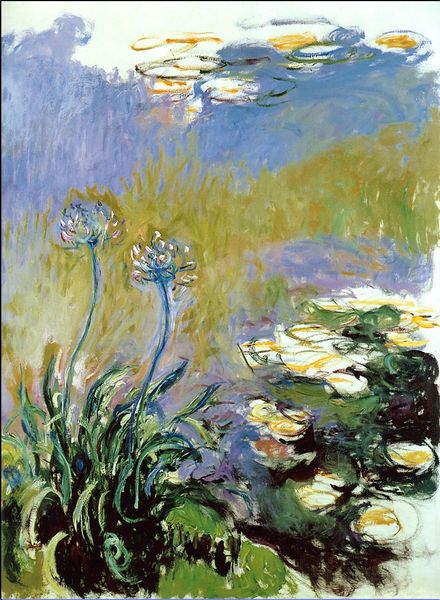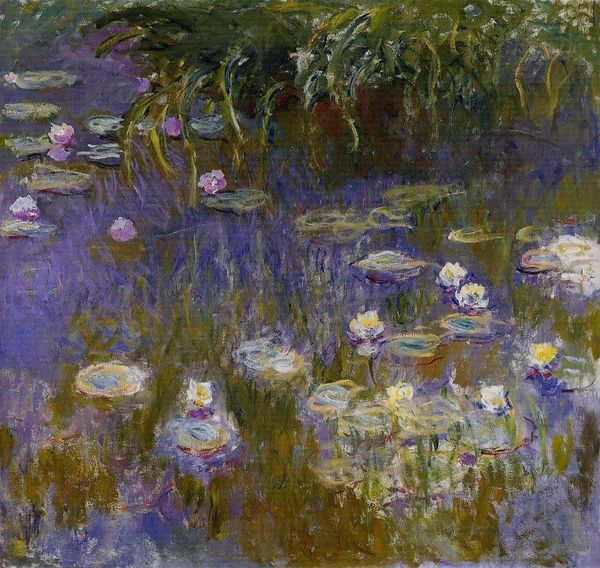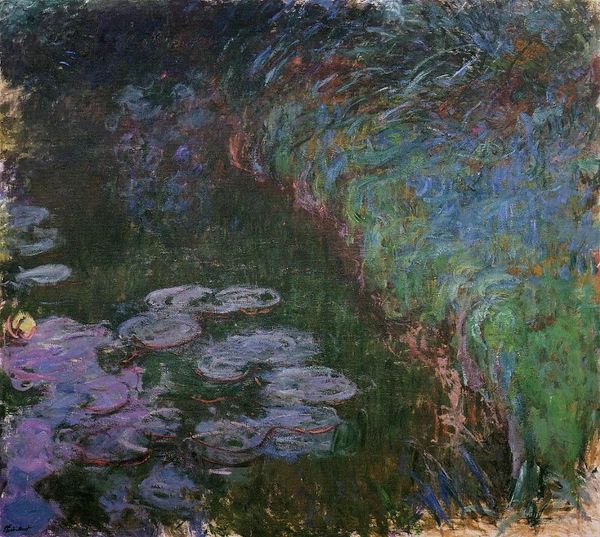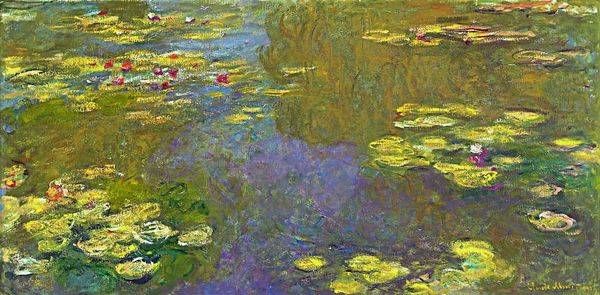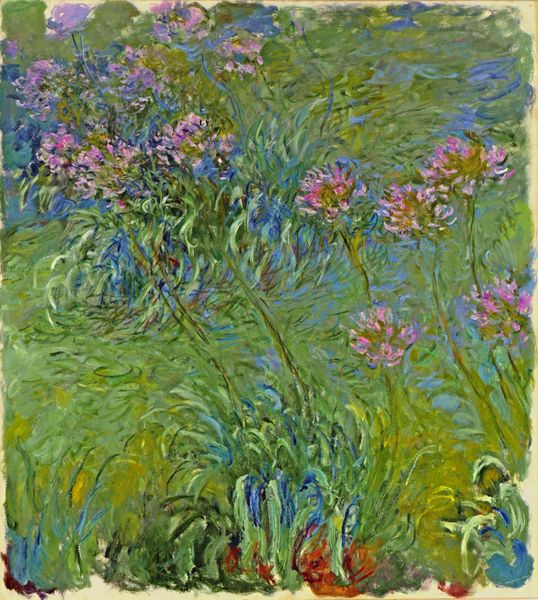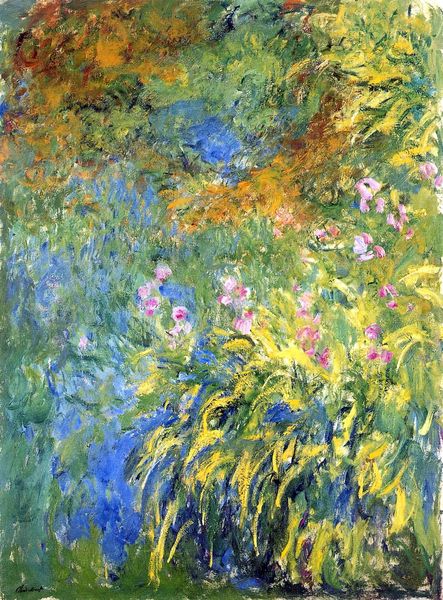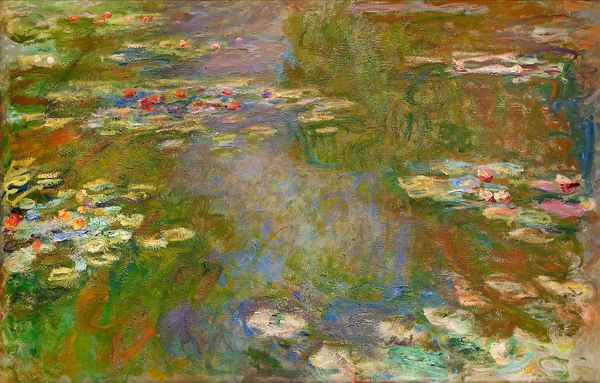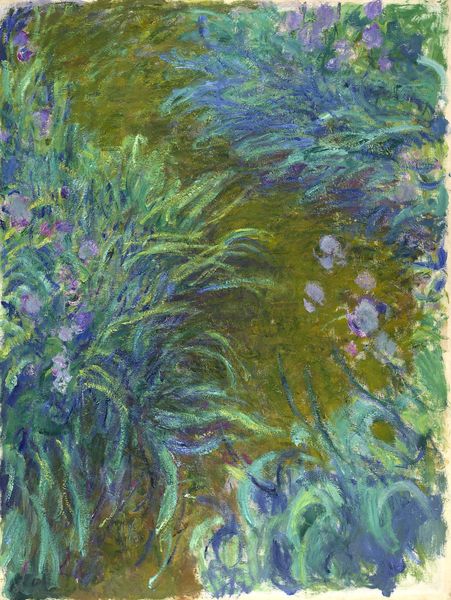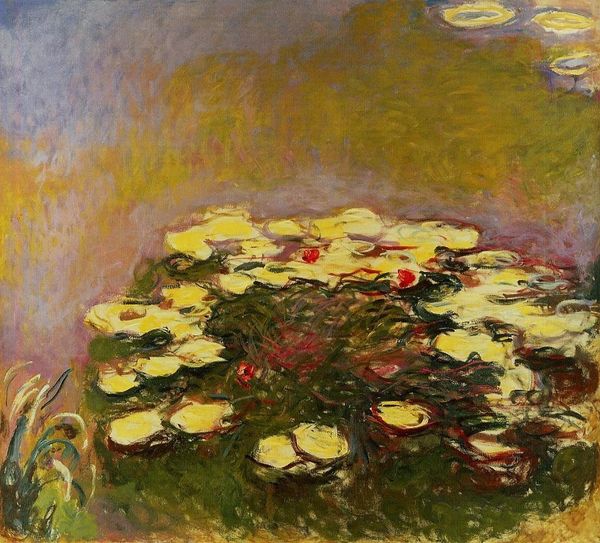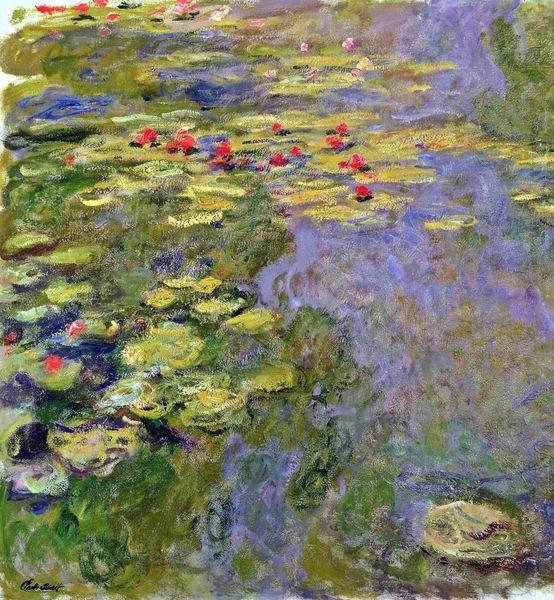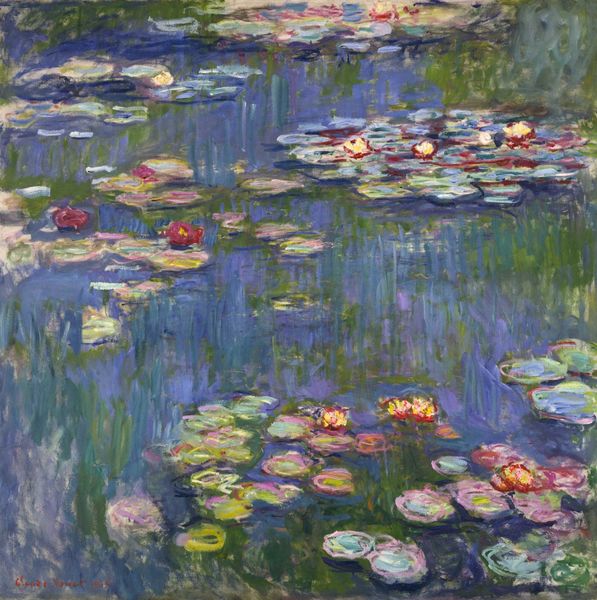
Copyright: Public domain
Editor: Here we have Claude Monet's "Water Lilies and Agapanthus," painted in 1917. It's an oil painting, alive with blues and purples. The lilies seem almost to float. It's dreamlike, yet there's a strange, almost unsettling intensity in the colors. What do you see in this piece? Curator: I see a reflection of the societal and personal anxieties of its time. Consider the context: World War I was raging. Monet, despite his privileged position, was deeply affected. The vibrant, almost aggressive colors – the purples you mentioned – they can be read as a kind of defiance, a claiming of beauty amidst destruction. How do these blues and purples strike *you*? Do they evoke a sense of peace or something more complex? Editor: They're definitely not peaceful, now that you mention the war context. There's almost a clashing quality to them, like different emotions fighting each other. Curator: Exactly! The "Water Lilies" series is often interpreted through a lens of serenity and escape, but situating them within the era's socio-political landscape invites us to question that reading. Was this simply a personal refuge, or did Monet's garden also serve as a space for grappling with the unspeakable horrors of the war, a challenge to those horrors? Think about how women in that period had to maintain a domestic presence in contrast to all the brutality of war. Editor: I never thought about it that way before. It makes the painting feel much more layered. Curator: And think about the agapanthus, those bold vertical strokes reaching upwards. Could they represent resilience, a reaching for hope despite the surrounding darkness? It asks, What kind of work could be expressed in a world that doesn't accept the position of the artist? Editor: Wow, that gives me a completely different perspective. It’s not just a pretty picture, it's a statement. I'll definitely never look at Impressionism the same way. Curator: Precisely! Art holds multiple narratives and offers ways to speak back to power. We just need to ask the right questions and be willing to listen.
Comments
No comments
Be the first to comment and join the conversation on the ultimate creative platform.
